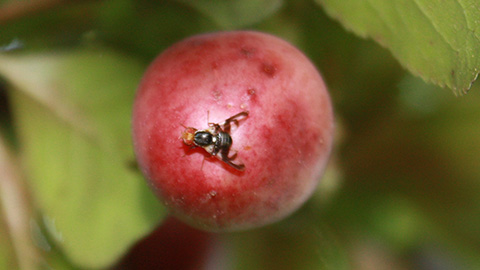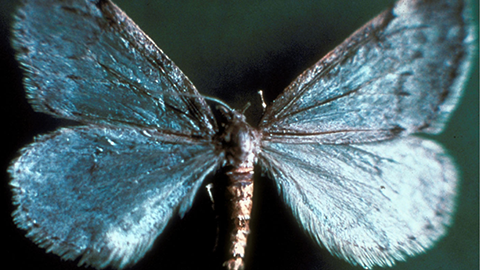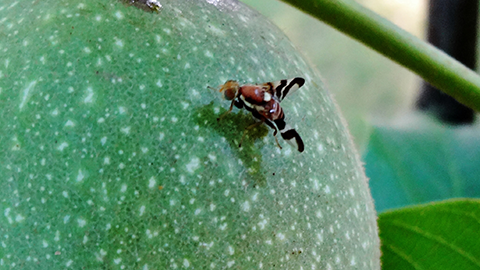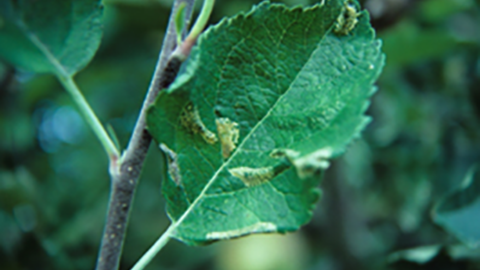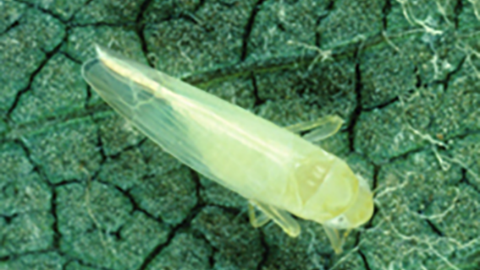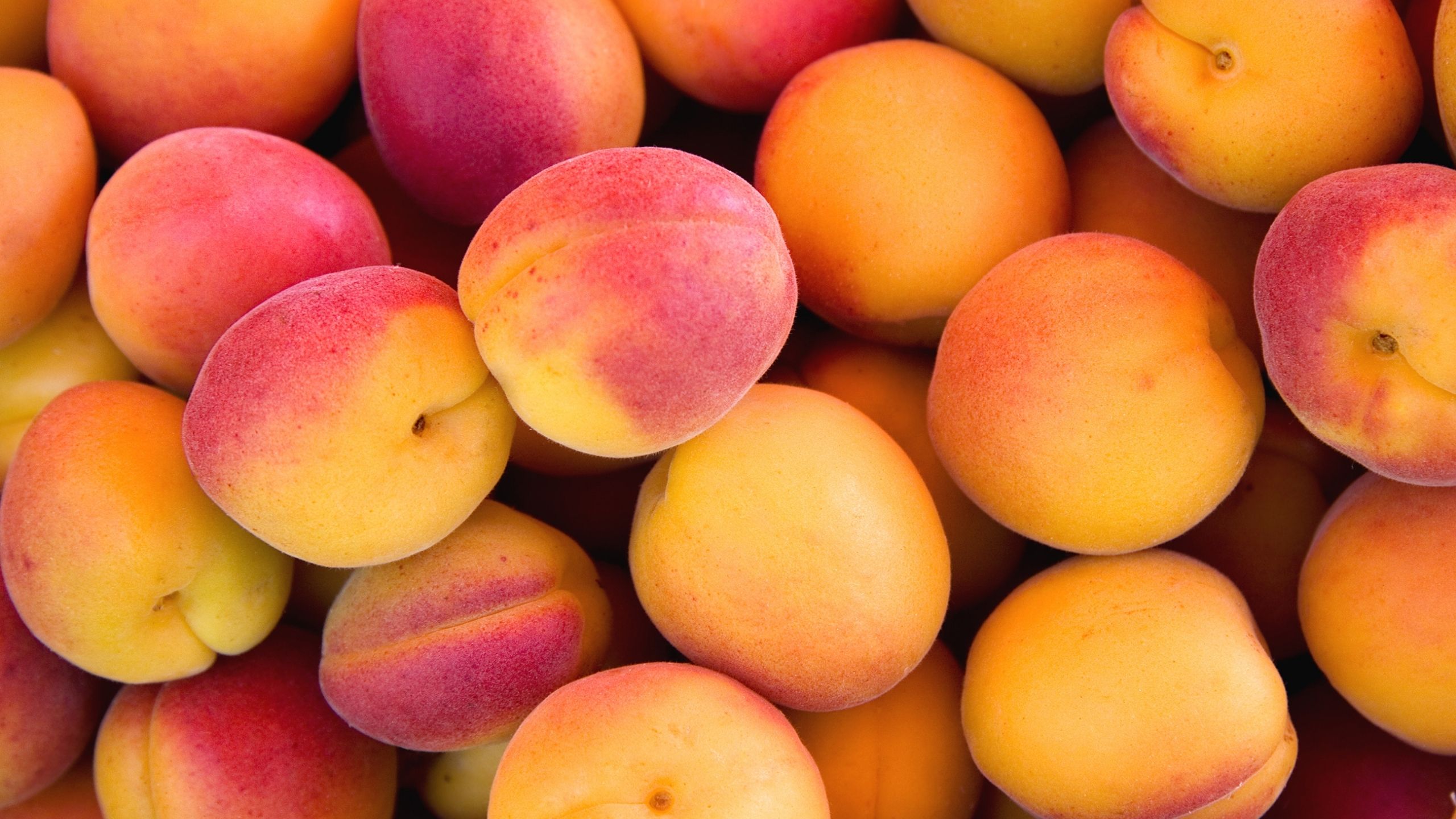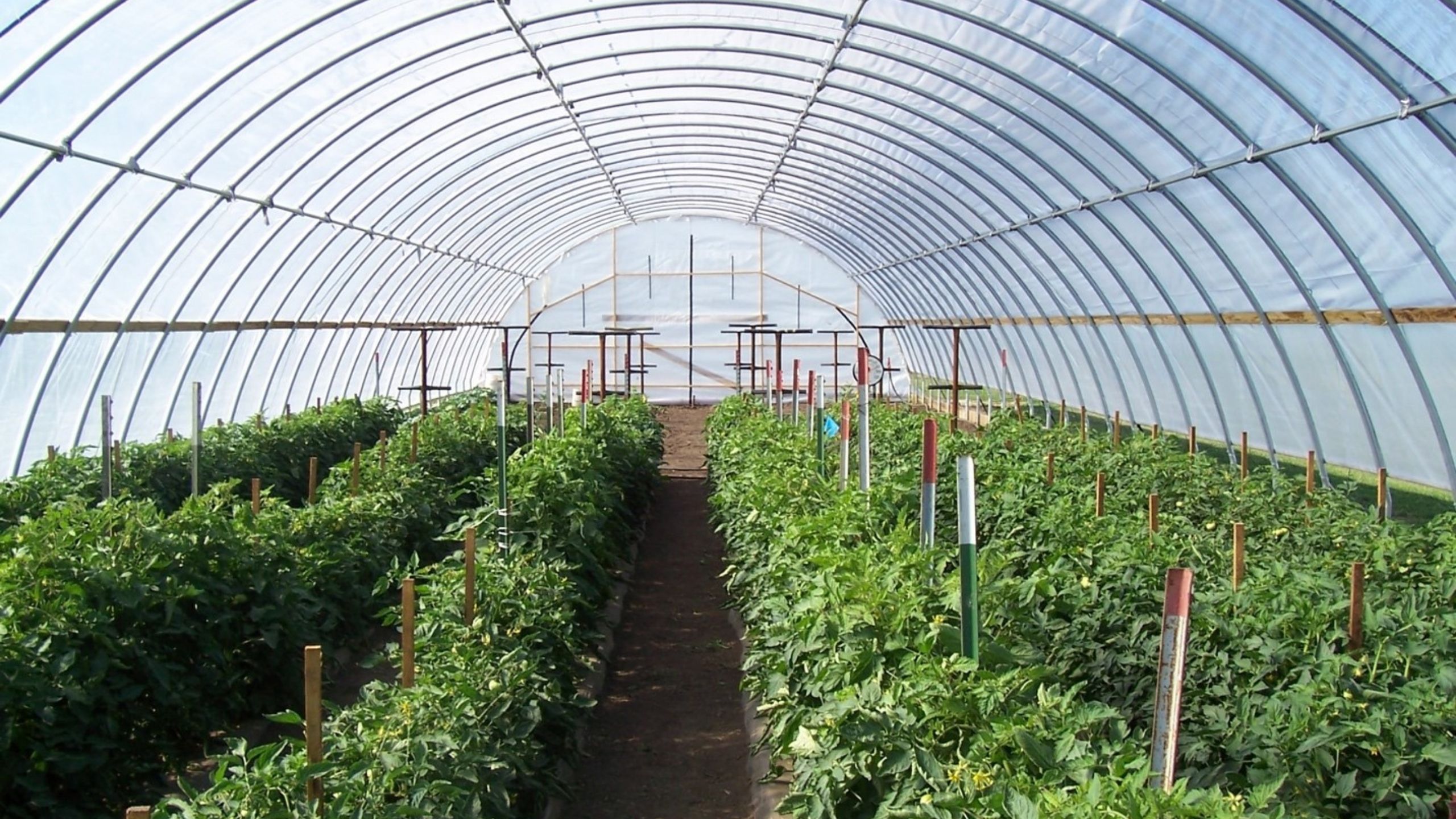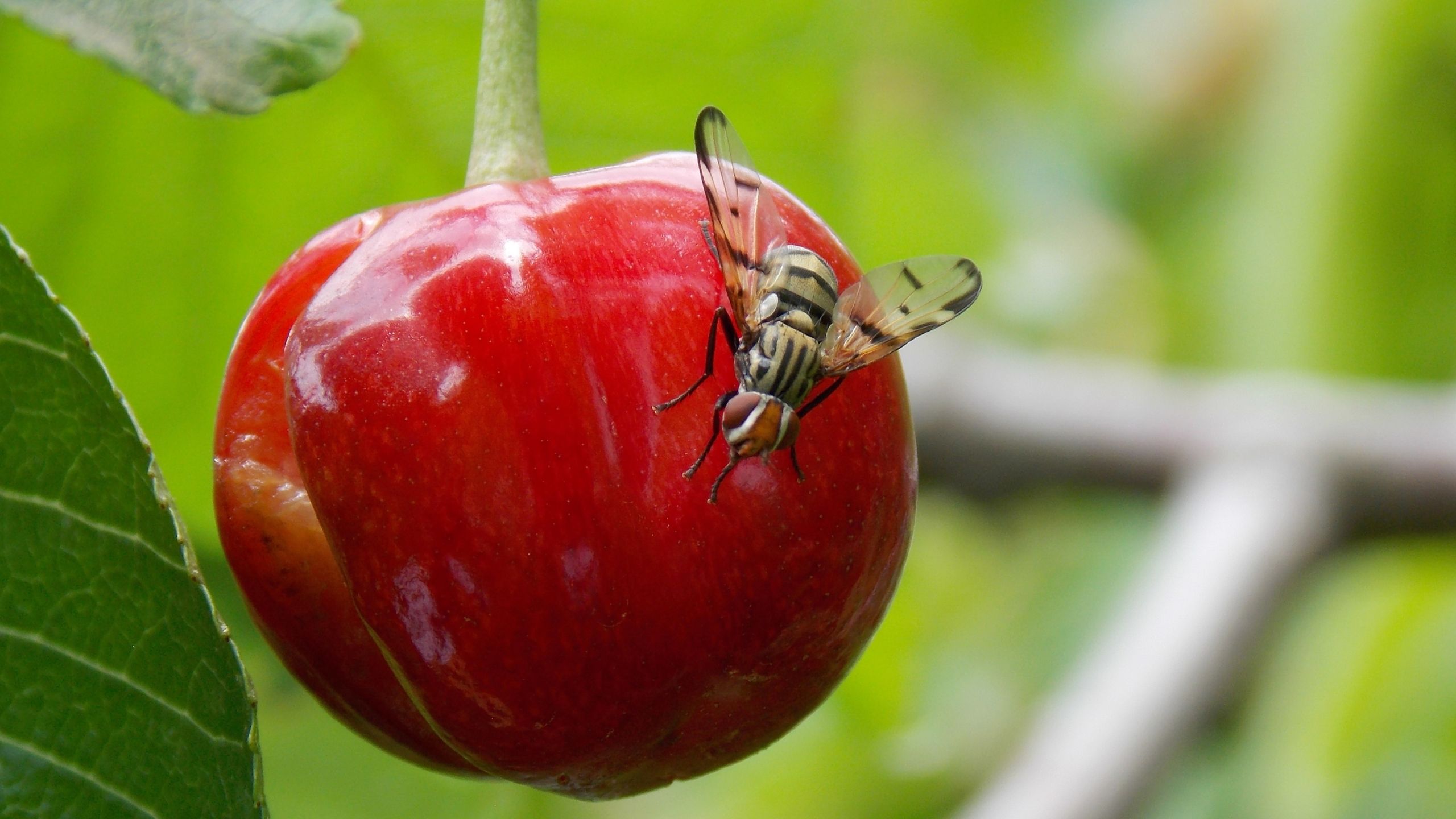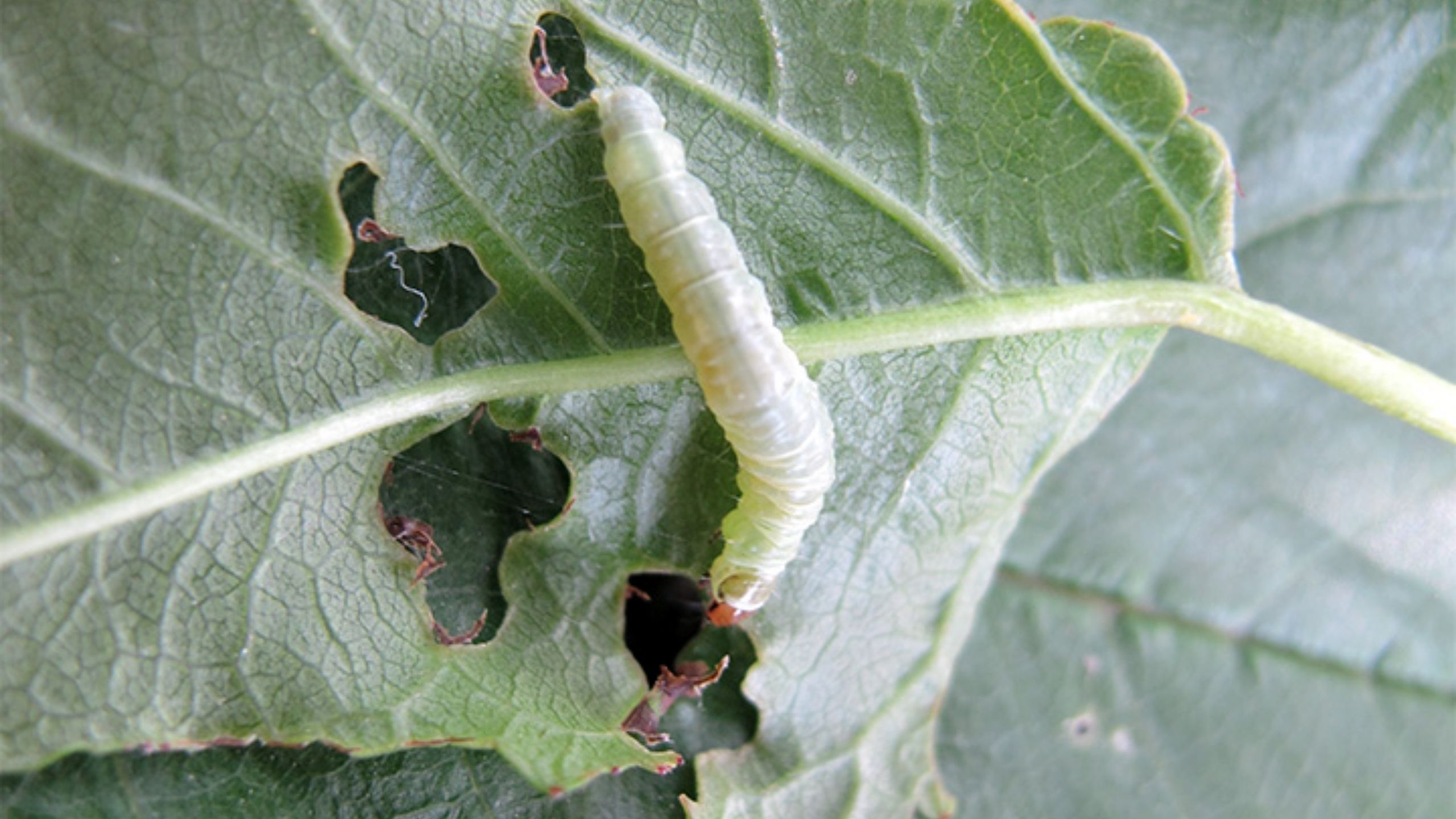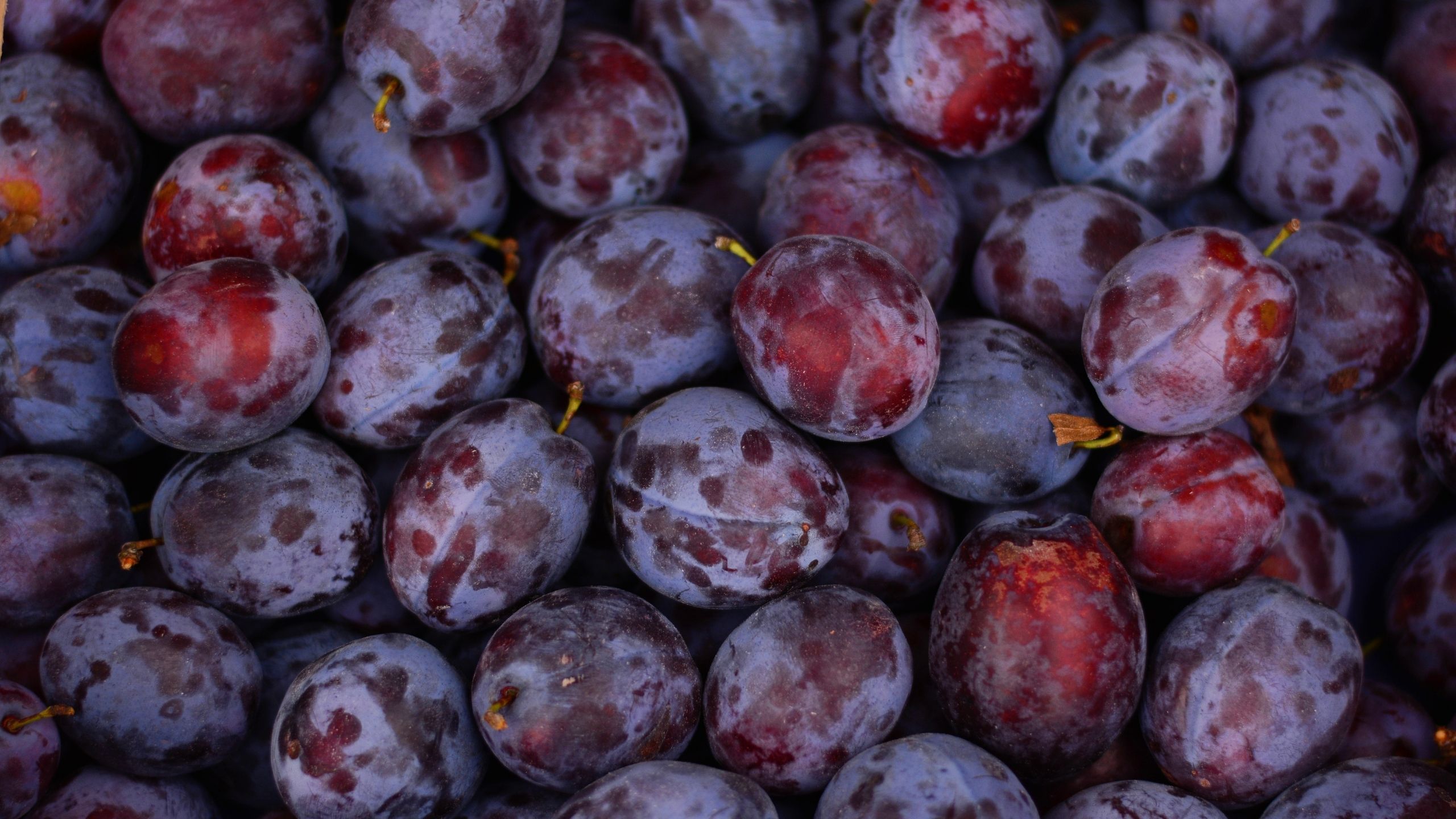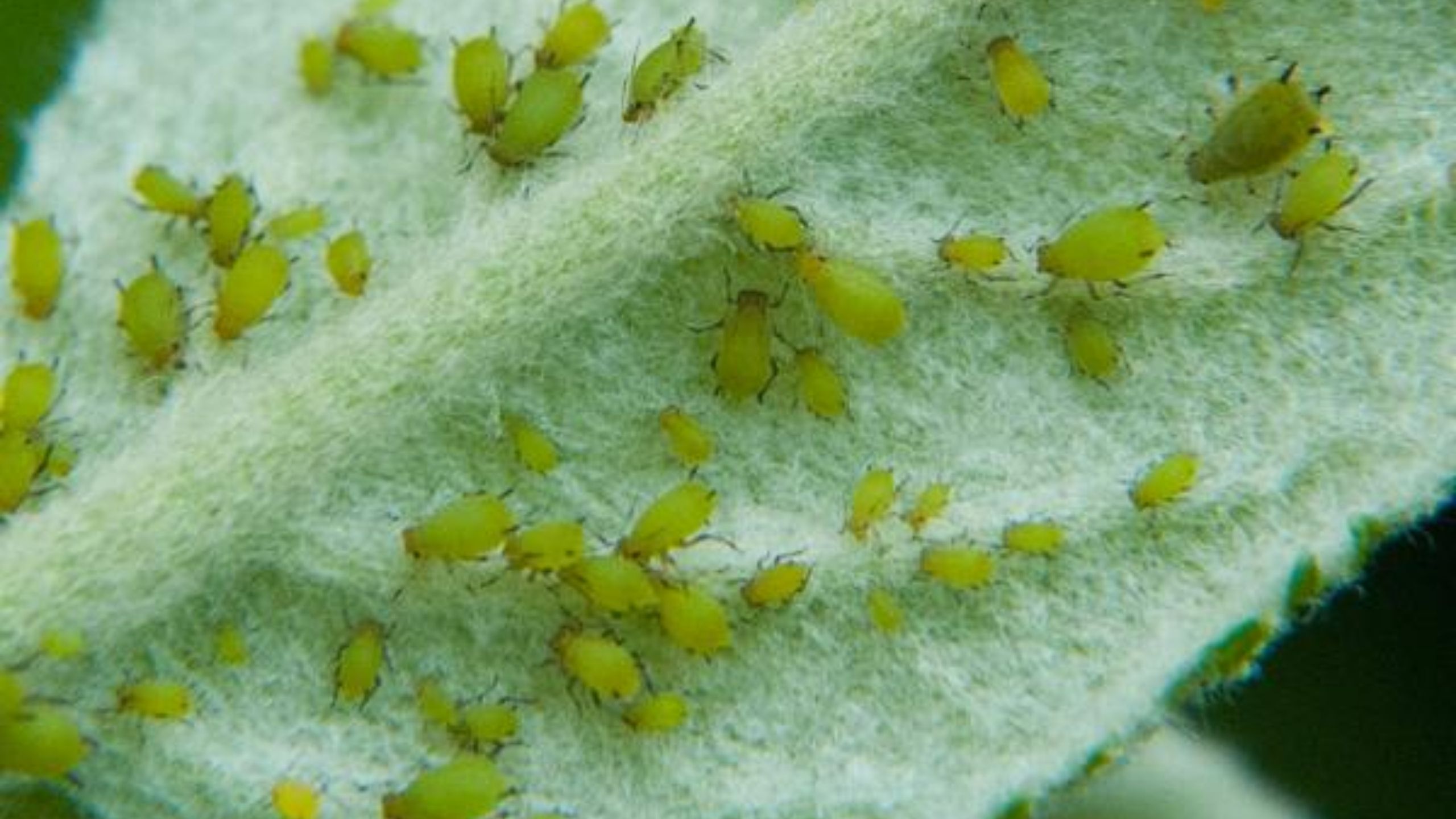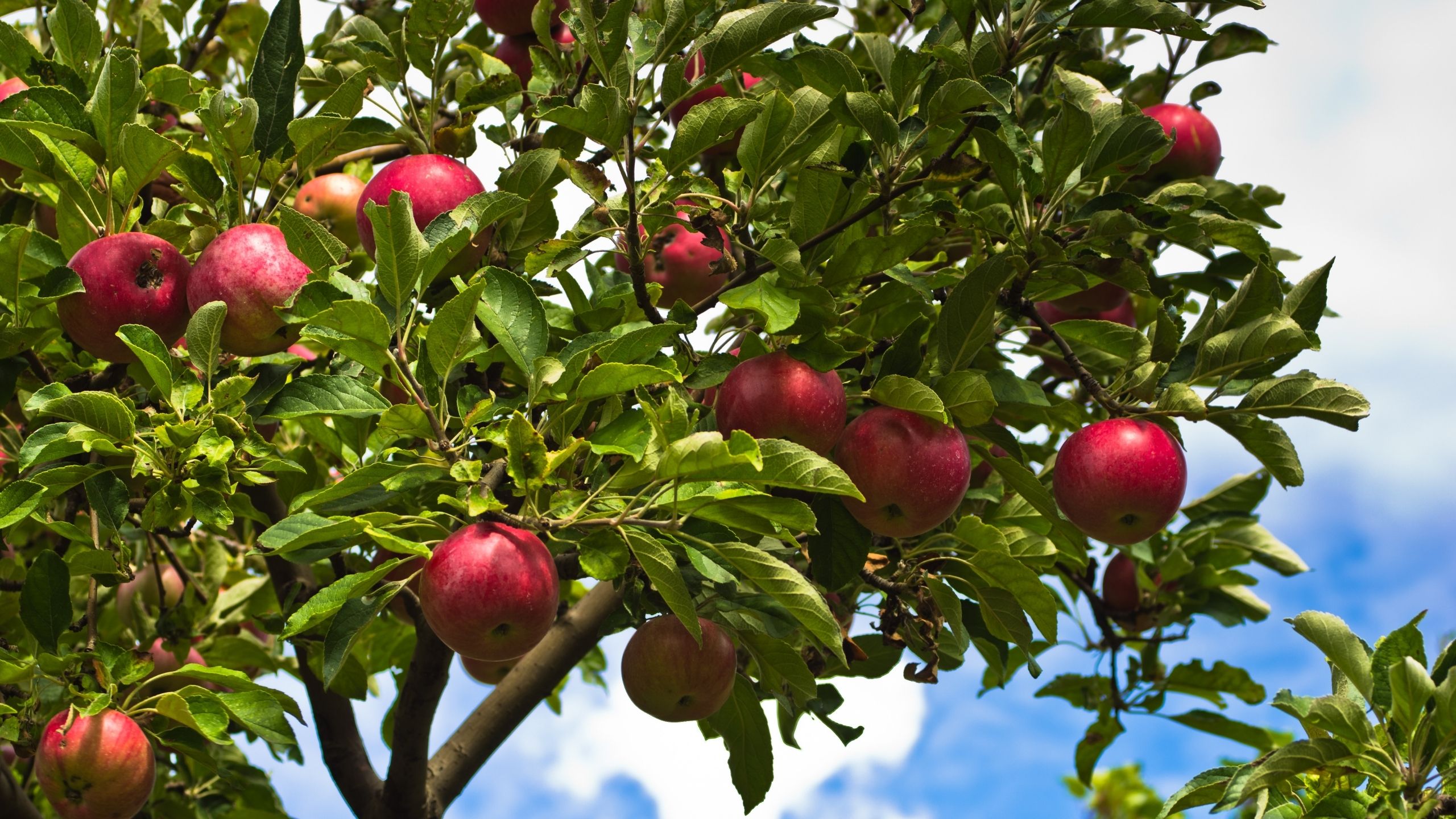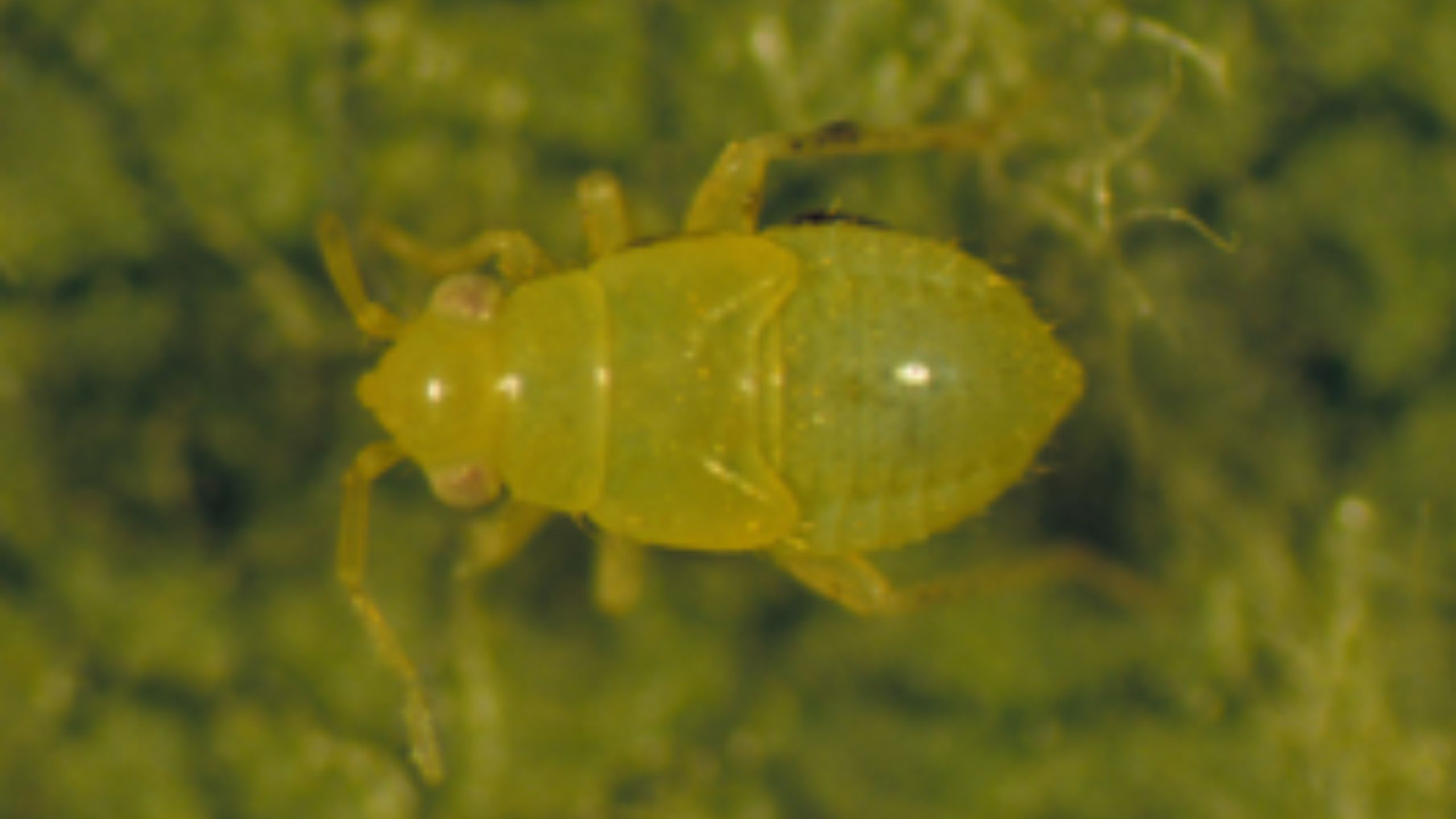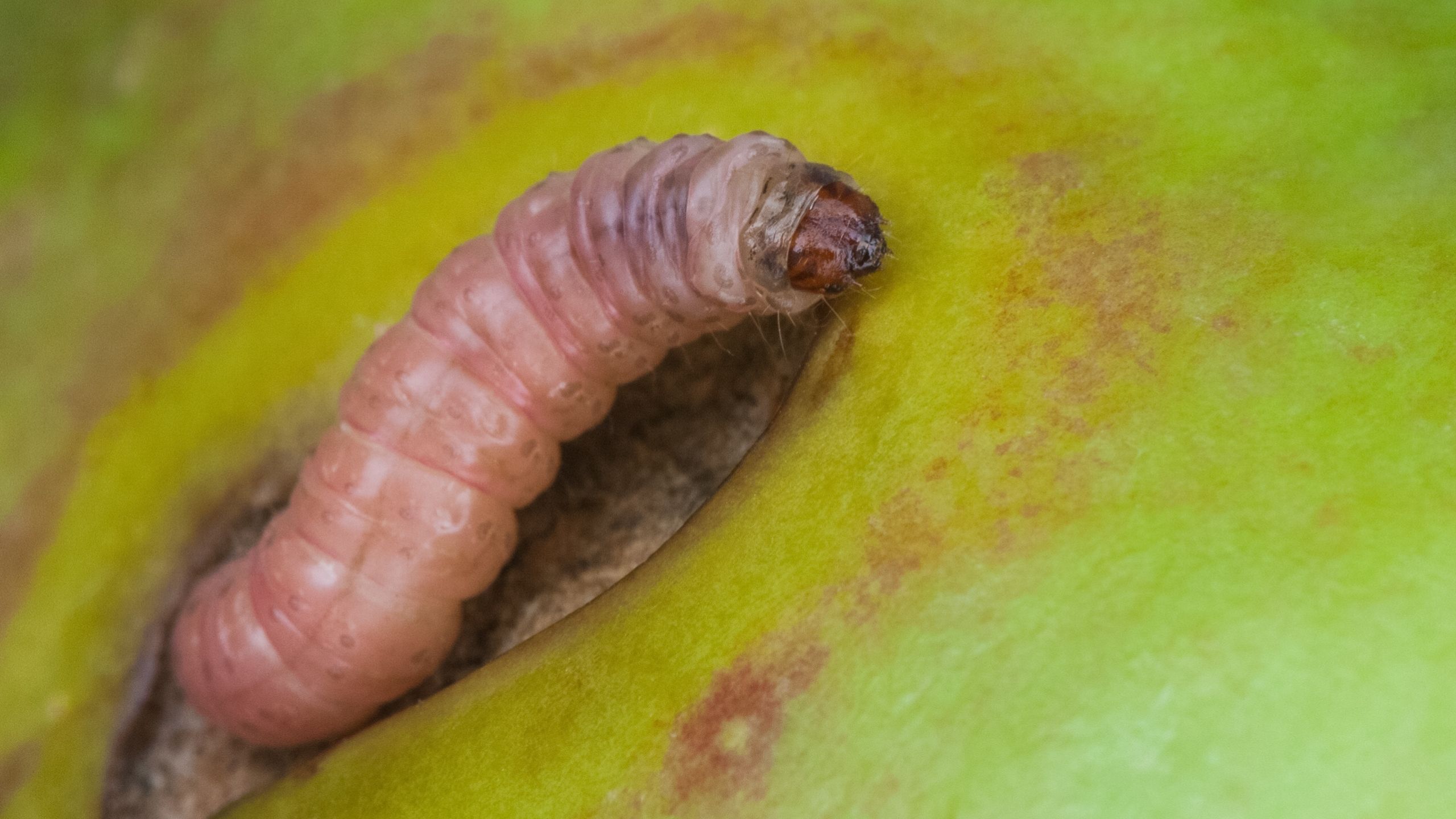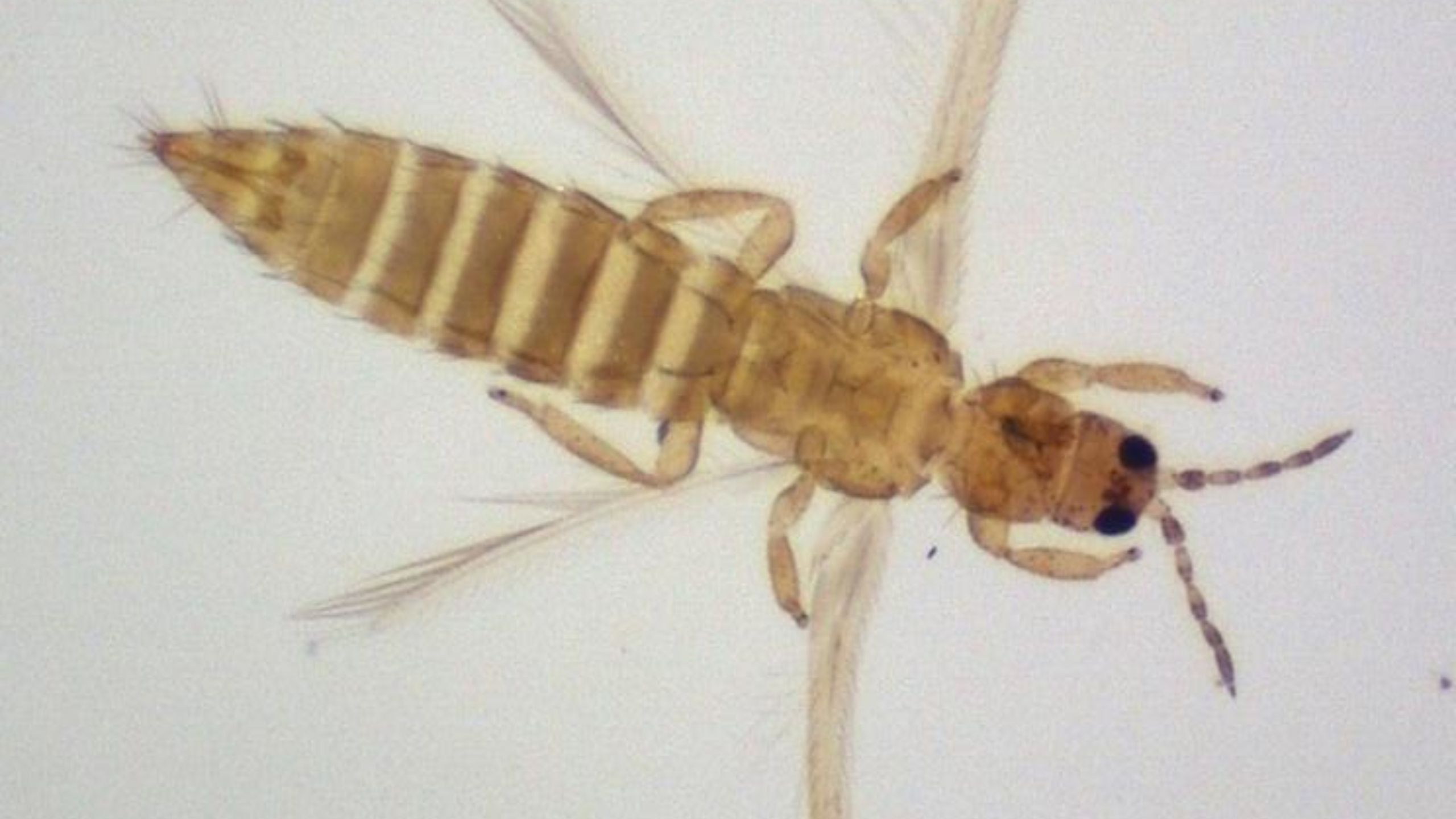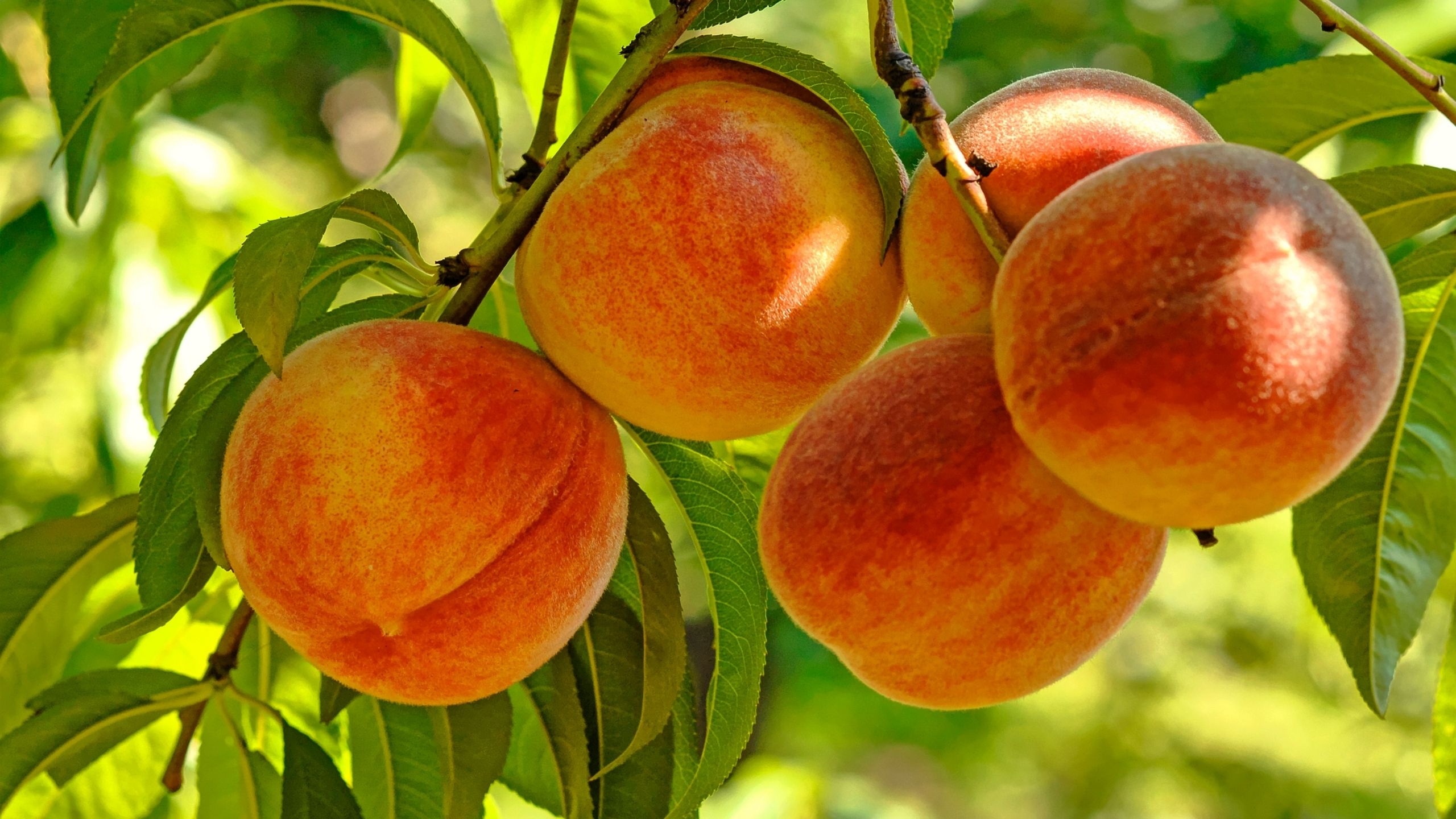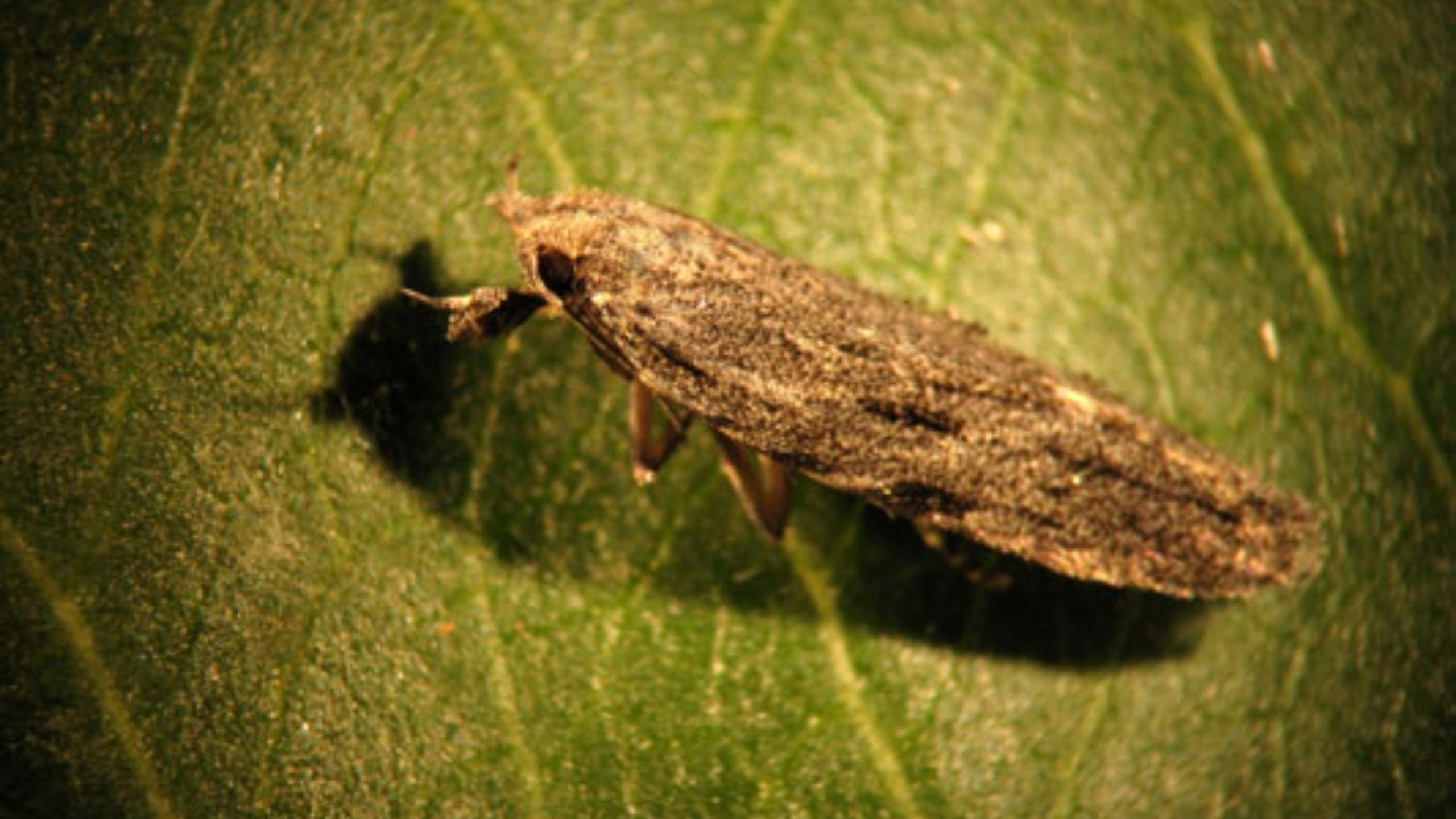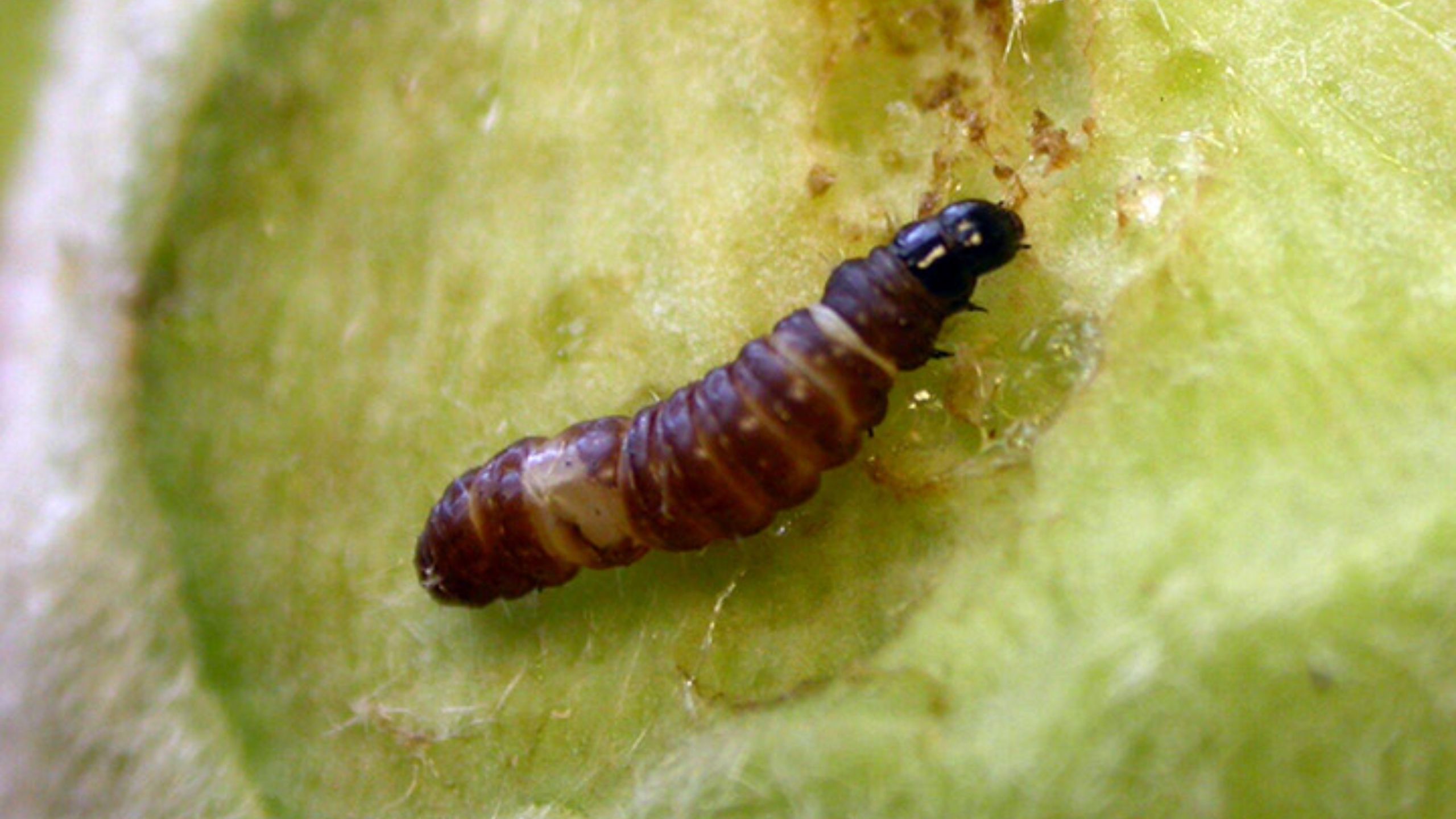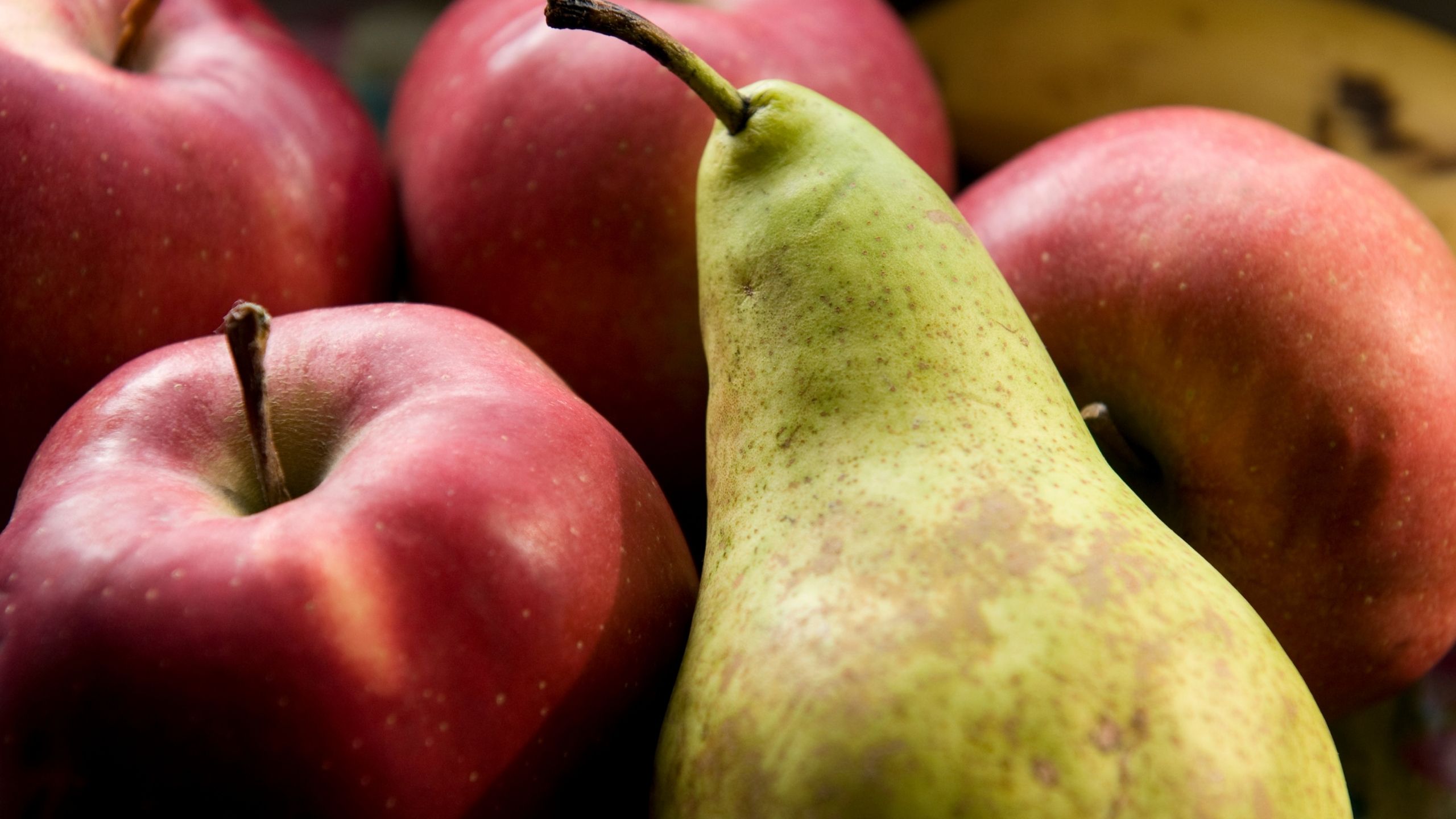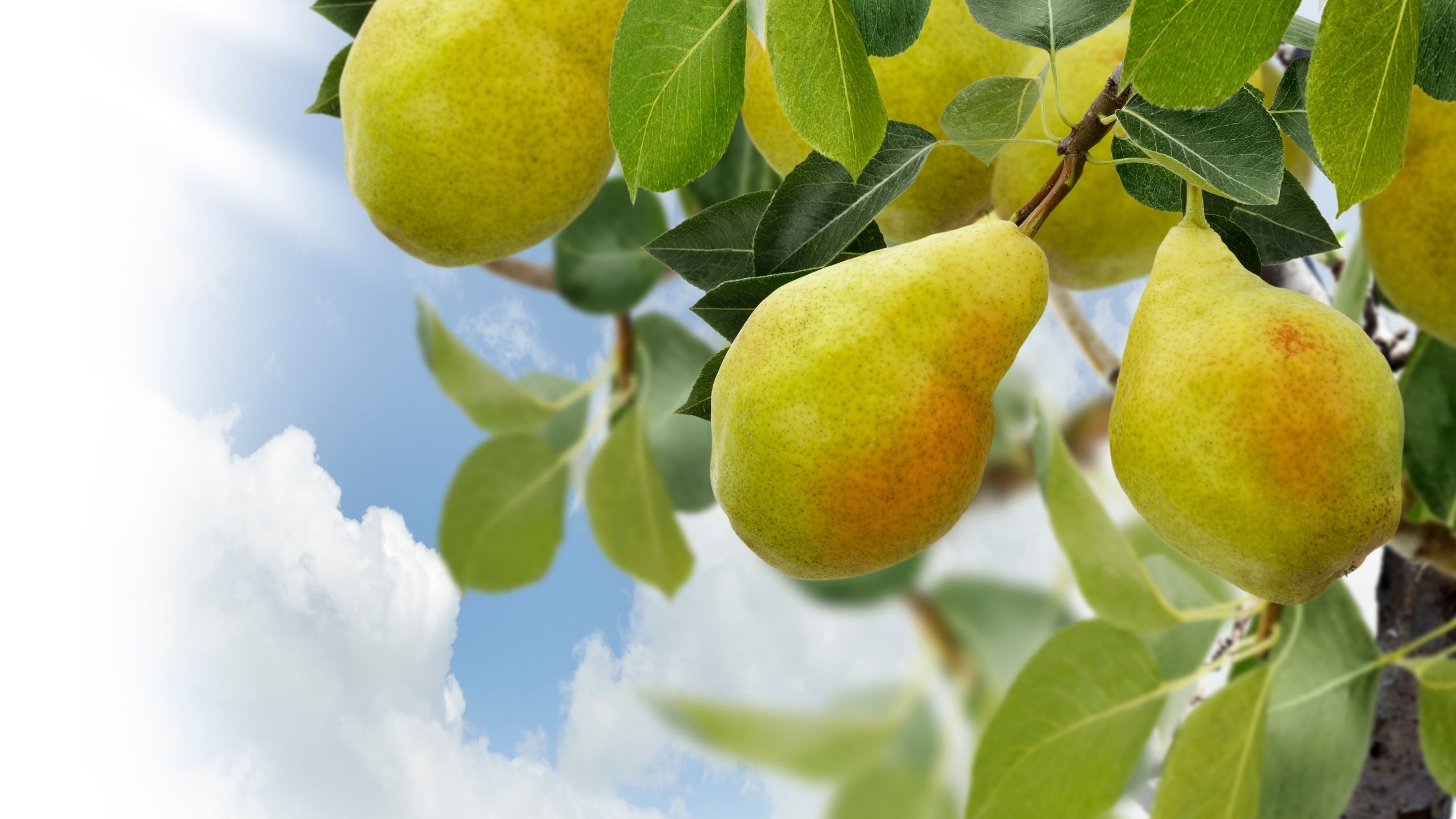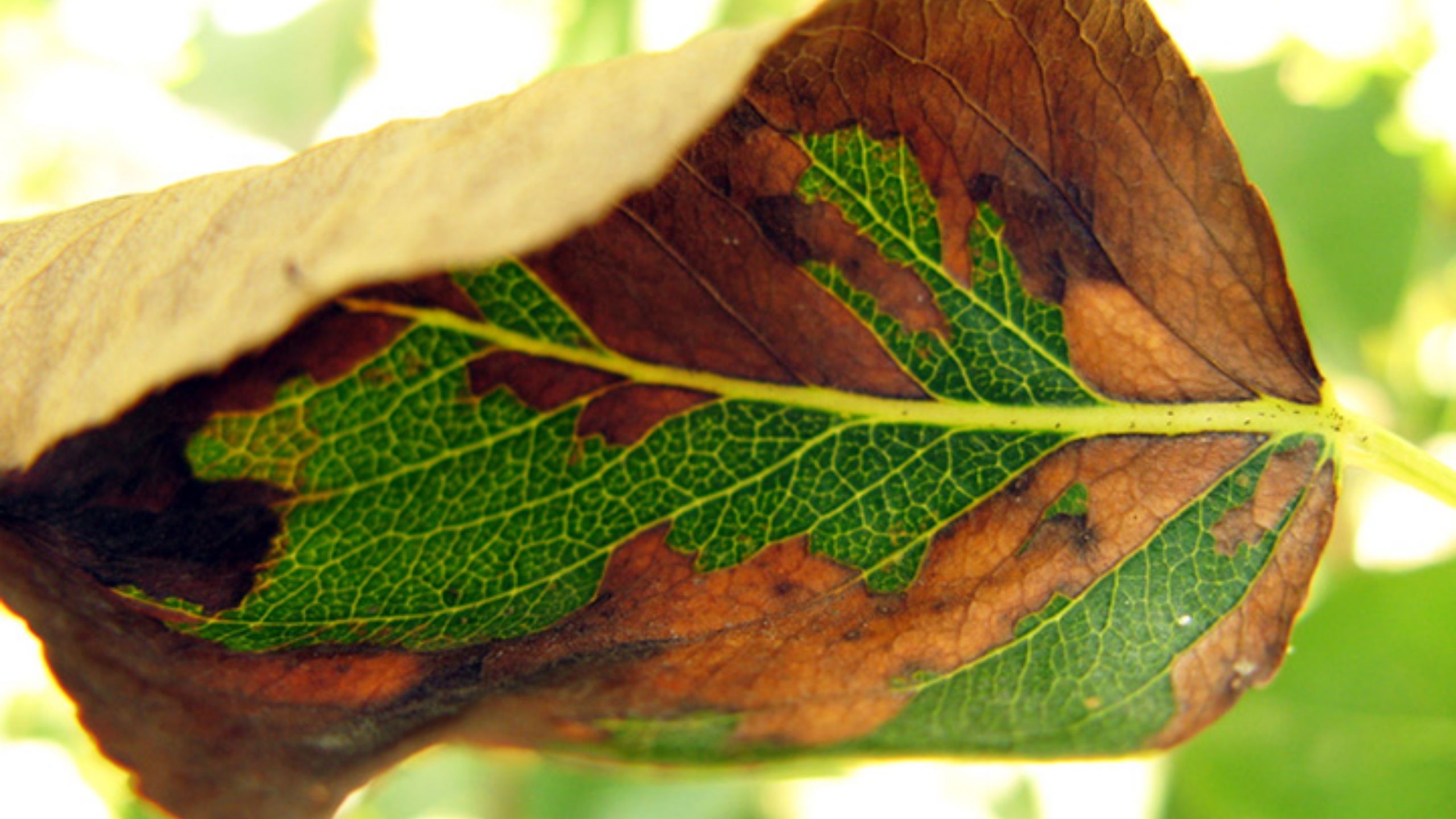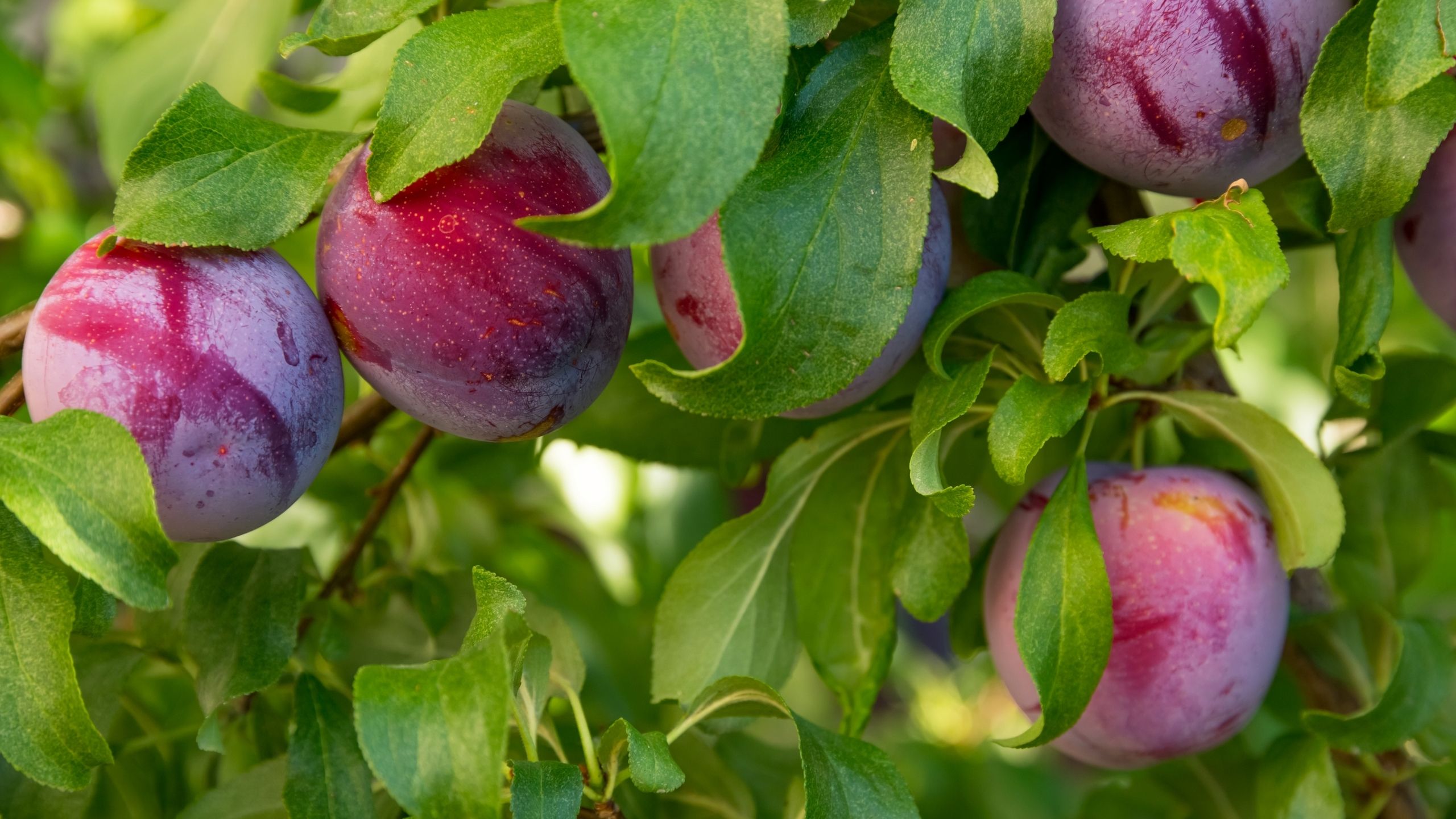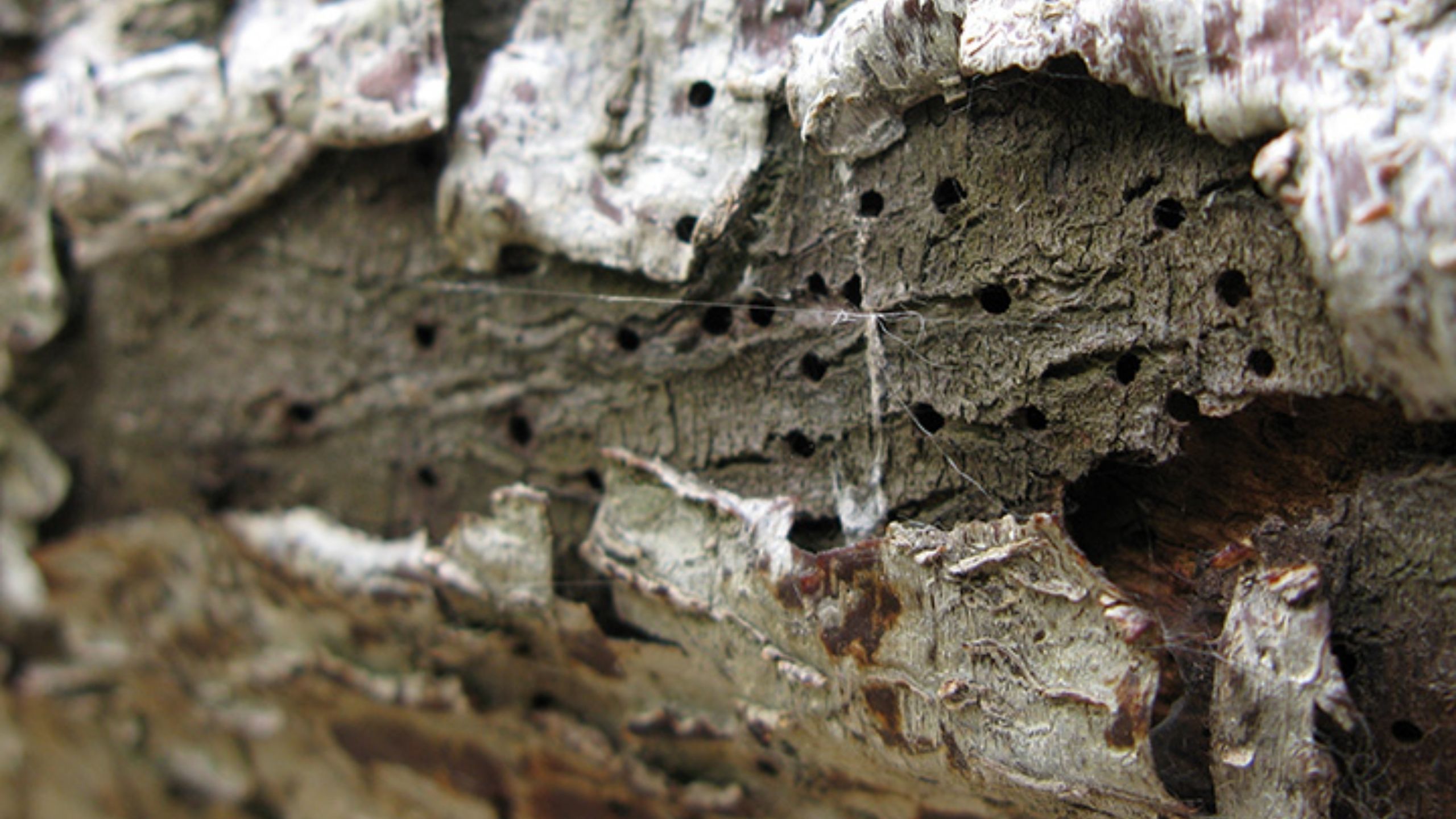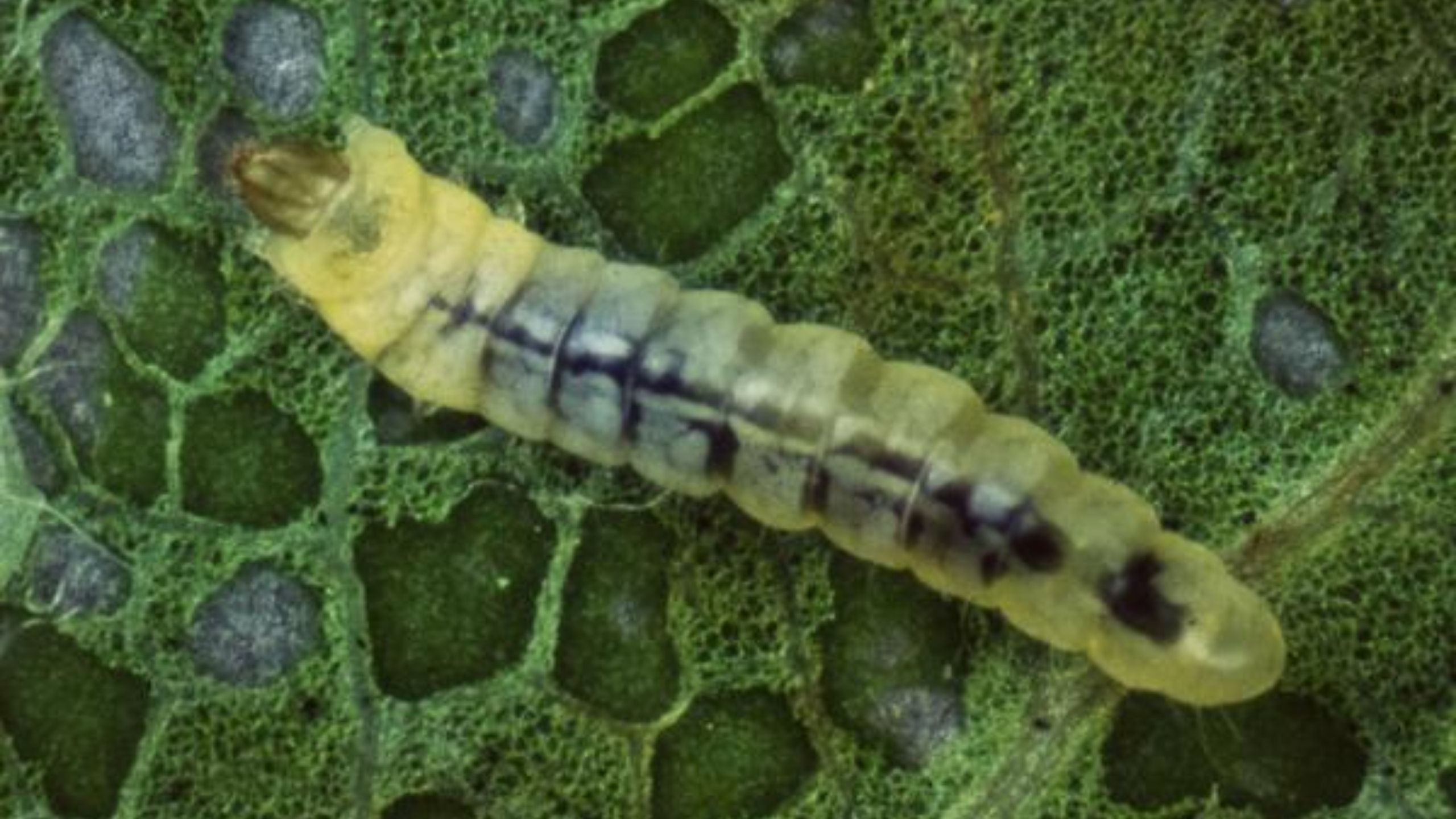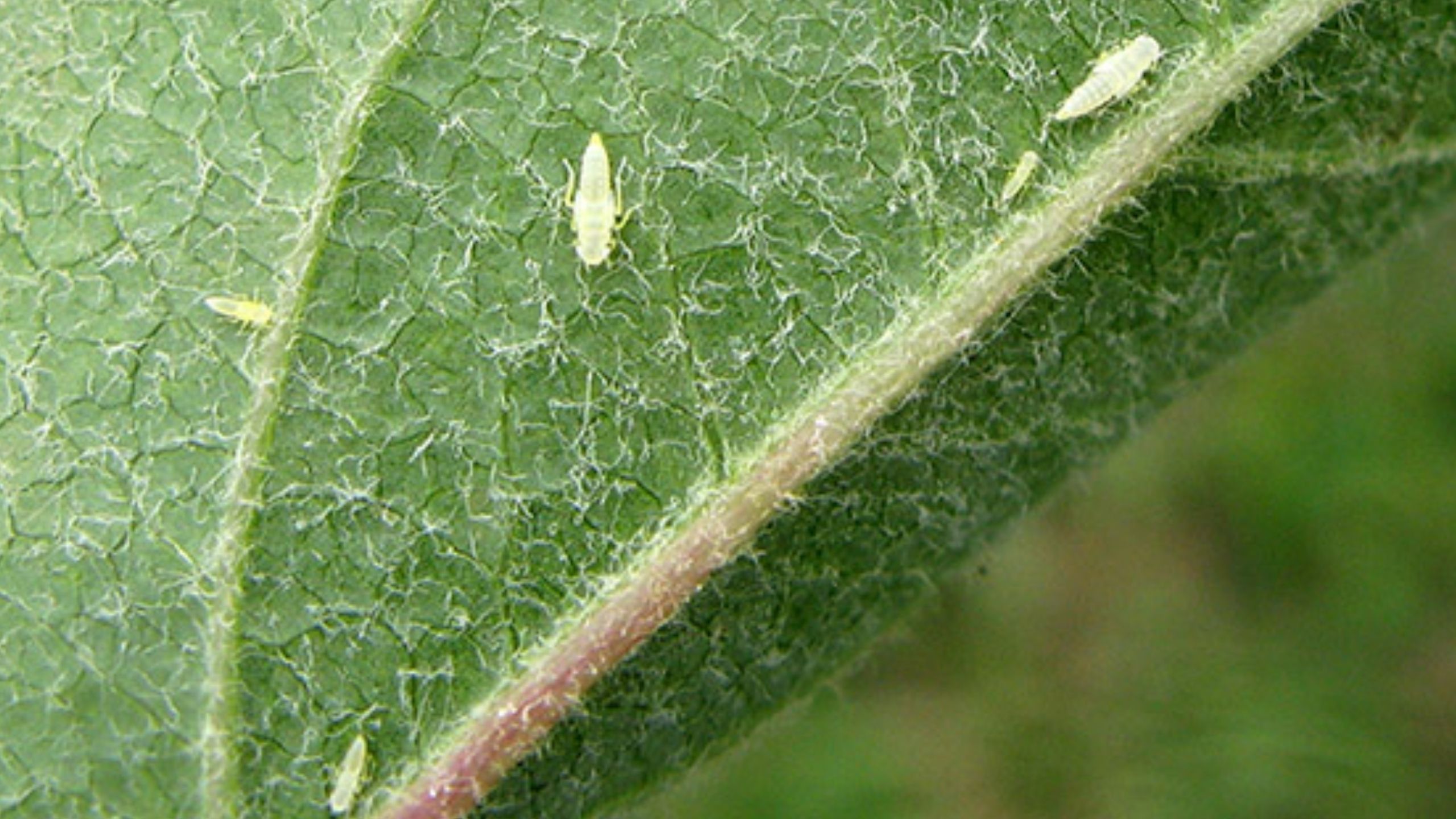San Jose Scale (Quadraspidiotus perniciosus)
October 2011
Diane G. Alston, Entomologist (No longer at USU) • Marion Murray, IPM Project Leader • Michael E. Reding, Entomologist (No longer at USU)
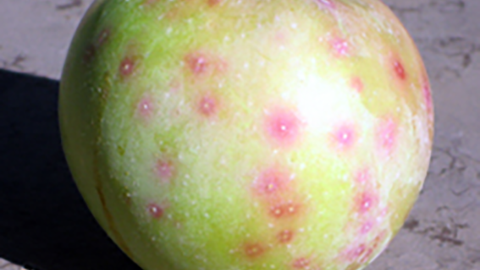

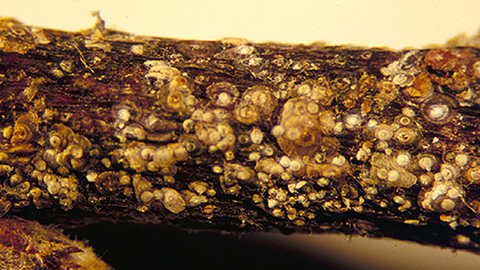
Do You Know?
- San Jose scale is a sporadic pest in well maintained commercial fruit orchards.
- Severe infestations can kill limbs, cause deformed and poor colored fruit, reduce yields, and eventually kill trees.
- Monitor fruit during picking and packing (check cull bins), and check tree limbs during pruning for signs of scale and injury.
- The first opportunity for control is during the delayed dormant period; apply horticultural oil plus insecticide
- If a summer spray is necessary, there is a degree-day model that can be used to time sprays to target the crawler stage, which is the most vulnerable to insecticide treatments.
San Jose scale occurs in most fruit growing districts of the United States. In well maintained orchards, populations are generally too low to cause economic loss. Infested wild trees, unmanaged or abandoned orchards, and backyard trees can be sources of scale infestation for commercial orchards. Severe infestations of scale can cause tree and fruit injury. Scale is primarily a problem on large, older trees where it is difficult to achieve good spray coverage. The scale is easiest to detect on fruit, leaves, and 1-year-old wood. A delayed dormant oil spray will target overwintering nymphs and can help to reduce pest incidence.
San Jose scale (Order Hemiptera, Family Diaspididae) is a tiny insect that spends most of its lifetime attached to a limb, fruit or leaf where it sucks plant sap. The male is the only stage that flies, while the nymphs and females remain on the tree. Although most life stages have low mobility, populations on a tree can reach high numbers within one to two growing seasons. A single female and her offspring can produce several thousand scales in one season. The San Jose scale generally has two generations per year in Colorado, Idaho and northern Utah, but can have as many as three in warmer areas such as Arizona and southern Utah. If left uncontrolled, scale can make fruit unmarketable and even kill the tree.
Plant Hosts
- Apple
- Peach
- Nut trees
- Pear
- Apricot
- Berries
- Cherry
- Plum
- Ornamental trees and shrubs
Life History
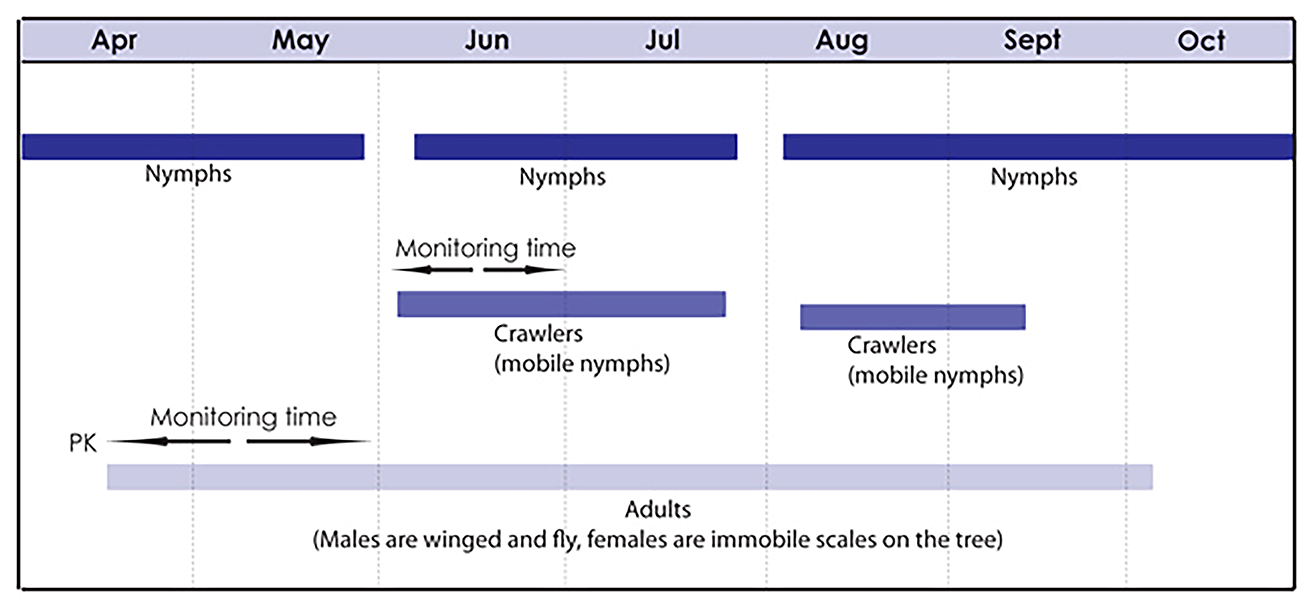
Black Cap Nymph—Overwintering Stage
- Size, shape, and color: less than 1/25 inch (1 mm) in diameter; protective scale covering is circular with no legs; black bands surround a lighter cap
- Where: on tree bark
- When: development resumes when spring temperatures exceed 51° F
- Survival of black cap nymphs is greater following mild winters
- The scale’s covering grows in diameter as the insect becomes larger
- It passes through several molts while maturing
- Final molt occurs 3 to 4 weeks later
- Male scales pass through two non-feeding stages before the final molt to the adult stage
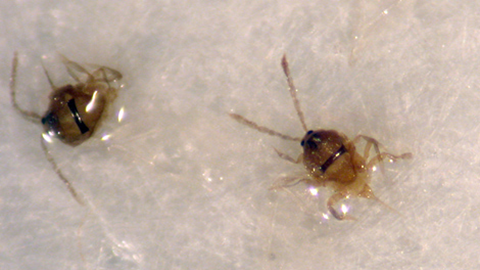
Adult
Female—Damaging Stage- Size, color, and shape: scale covering is about the size of a pinhead; gray, circular, and slightly raised; it often has a ringed appearance from molting; females can reach 1/12 inch (2 mm) in diameter; the soft body underneath is yellow with no wings or legs
- Where: female stays under scale covering for the remainder of her lifetime
- Releases a sex pheromone to attract males for mating
- Each female produces several hundred live crawlers over a 6-week period
- Size, color, and shape: about 1/25 inch (1 mm) long; body is gold with a dark band across the back; has wings and long, plumose antennae
- Where: males emerge from their nymphal scale covering to fly for a few days and mate with females
- When: first flight often occurs during apple bloom in late April to early May
Nymph—Damaging Stage
- Female scales produce live young that emerge from under her protective covering
- There are several molts per stage: crawler, white cap, and black cap
- Size, color, and shape: about 1/100 inch (0.3 mm) long, bright yellow, and oval
- Where: after exiting the female scale’s cover, the nymph walks or is carried by air currents, farm machinery, or other means to a new site on the bark, fruit, or leaf of a tree
- When: emergence of first generation crawlers generally occurs about 4 to 6 weeks after bloom (early June); there are two generations of crawlers in Northern Utah that peak in late June and again in August
- Within a few hours after emerging and dispersing, a crawler will settle, tuck in its legs and antennae, and insert its long bristled mouthpart into the host tree to begin feeding on the sap
- Scale crawlers resemble larval spider mites, except that mites do not have antennae; also resemble young pear psylla, but lack the red eyes of psylla nymphs
- As a nymph feeds, it secretes a white, waxy scale covering
- The waxy covering turns from white to black and then to gray as the scale goes through several molts before maturing
- Generations overlap and all stages can be found on the tree at the same time during summer
Host Injury
- San Jose scales that occur on twigs and limbs can cause an overall decline in tree vigor, growth, and productivity; severe infestations can kill twigs, limbs, and even the entire tree if not controlled.
- Feeding on fruit causes a slight depression and a red to purple spot around the feeding sites and can decrease the cosmetic quality of the crop; mild infestations on fruit are usually concentrated at the calyx end.
- Early season fruit infestations may result in small, deformed, and poorly colored fruit.
Timing Control
Dormancy
Usually the first indication that San Jose scale has infested an orchard is finding infested fruit during harvest or packing, or finding infested tree limbs during pruning.
If a scale infestation is detected:
- Scout the orchard during dormancy to determine the level of infestation; infestations can be detected during pruning.
- Look for trees that have retained their leaves during winter as this is a good indication of scale infested twigs or limbs; remember that scale-infestations are rarely distributed evenly in a tree or throughout an orchard.
- Carefully check the tops of trees and around tree trunks as scale populations often build up in these places first.
- Flag infested trees or areas to ensure that control sprays are targeted for these problem spots.

Spring and Summer
The first flight of males can be monitored with pheromone traps in spring. However, because male scales are weak fliers and because erratic spring weather can greatly influence their activity, the efficiency of pheromone traps can be highly variable. Because it is difficult to determine a biofix (first consistent trap capture) and developmental thresholds of the scale are very similar to those of codling moth, the biofix for codling moth can be used for San Jose scale. If you choose to monitor male scale populations, the following guidelines are recommended.
Pheremone Trap Placement- Double-sided pheromone sticky traps can be used to monitor adult male activity
- Traps are baited with the female sex pheromone; lures are effective for 4 to 6 weeks
- Place traps in orchards at the pink stage of apple fruit-bud development (see Table 1)
- Position traps on the northern or eastern side of the tree at a height of 6 to 7 feet (approx. 7 m)
- Use at least three or four traps regardless of orchard size
- Check traps every 1 to 2 days until the first male scale is caught
Male Identification
- Use a hand lens to inspect the surface of sticky traps.
- Male scales are tiny [about 1/25 inch (1 mm) long], yellow insects with long, plumose antennae and a dark band across the back between the wings
- Once the first male is caught, check traps daily; when the first consistent flight occurs (trap catch on two or more consecutive days), the “biofix” is established
- Monitoring beyond biofix is not necessary unless you want to know general male population densities
- After the first male scales have been trapped, begin calculating degree-days (DD) to predict crawler emergence
- Degree-day accumulations can be determined by using the Utah Timing Resource and Alert for Pests (TRAPs) website; select a representative weather station near your location, the pest of interest (San Jose scale), and enter your orchard’s biofix date; TRAPs will estimate the date that scale crawlers will emerge
- The lower and upper temperature thresholds for San Jose scale development are 51° F and 90° F
- Crawler emergence begins at about 405 DD after biofix (see Table 1)
- Optimum timing for a crawler control spray is 600 to 700 DD after biofix
- An alternative to using pheromone traps is to wrap two-sided sticky tape around tree limbs where San Jose scale infestations have been detected
- Emerging crawlers will be caught on the sticky tape
- Tape should be checked frequently, beginning about 4 to 6 weeks after bloom (usually early June), for the presence of crawlers
- Optimum timing for a crawler control spray using sticky tape is 200 to 300 DD after the first crawlers are trapped (see Table 1)
- Crawler activity can also be monitored by periodically checking new shoot growth in infested trees; crawlers will be concentrated on new growth
Management
The best approach to managing San Jose scale is to prevent infestations from becoming established and spreading. One of the best ways to do this is to apply horticultural oil plus an insecticide at the delayed dormant timing. This treatment is more effective at preventing scales from becoming established in orchards than late spring or summer treatments. However, late spring treatments that target the crawlers can prevent infestations of the fruit. Closely monitoring for signs of scale and injury on harvested fruit during picking or in the packing shed, and on tree limbs during pruning, can help identify scale infestations before they become established. It is also important to examine young trees that don’t receive a full spray program. Controlling infestations in the early stages will not only protect tree vigor but will prevent infestations from spreading to other trees in the orchard, and to nearby orchards.
Table 1. The difference in number of days (range) between the new model (fixed-biofix) using March 1 as the start date, and the trap-biofix for predicting seasonal flight and egg hatch in 30 orchard location-years in northern and southern Utah, 2016- 2018. Start and end of egg hatch periods for the 1st and 2nd codling moth generations are provided. Positive numbers indicate equation predictions were earlier than traps; negative numbers indicate equation predictions were later than traps.
| Degree Days (DD) | Management Event |
|---|---|
| If San Jose scale was present the previous season: Dormant | Apply a delayed dormant spray (oil + insecticide) |
| Spring and Summer 215 DD since January 1a (approx. pink stage of apple) |
Place pheromone traps in orchard |
| 275 DD since January 1a | First males expected, check traps every 1-2 days until biofix is determined |
| 0 DD = biofixb | First consistent male catch, reset DD to 0 |
| 405 DD since biofix | First crawlers expected, place sticky tape if trapping for crawlers |
| 600-700 DD since biofix OR 200-300 DD after first crawlers are trapped on sticky tape | Apply spray targeting control of crawlers |
b Biofix has occurred when at least one male is captured in a pheromone trap on two or more consecutive nights. The Utah IPM Program is using codling moth biofix in lieu of setting a San Jose scale biofix because of the inconsistency in male scale flight and capture in traps.
Insecticides
Dormancy
Use of a delayed dormant spray targeting overwintering scale is the best approach once a scale infestation has been identified.
- Horticultural oil (superior, supreme, or other similar weight of petroleum oil suitable for the dormant season) alone* OR + chlorpyrifos (Lorsban)R+, buprofezin (Centaur), or pyriproxyfen (Esteem)
*Oil alone is not as effective as in combination with an insecticide, but can be used to maintain an organic or low-spray program
+Not on apricots
Spring and Summer
If scale infestations are severe enough to warrant further clean up, insecticide sprays should be timed with crawler activity based on use of the degree-day timing model or crawler catch on sticky tape (see Table 1).
Recommended chemicals:
- azadirachtin (Aza-Direct, Azatin, Ecozin, Neemix)O, H
- buprofezin (Centaur)
- diazinon (Diazinon)R
- flubendiamide/buprofezin (Tourismo)
- imidacloprid/cyfluthrin (Leverage)R
- phosmet (Imidan)
- pyriproxyfen (Esteem)
- summer-weight oil (horticultural mineral oil, canola oil, soybean oil, others)O, H
OOrganic (OMRI-approved) products available.
HHomeowner products available.
RRestricted use insecticide; restricted to those with a pesticide applicators license only
All brands are registered trademarks. Examples of brands may not be all-inclusive, but are meant to provide examples of products registered in Utah. The availability of pesticides may change. Always read the label for registered uses, application and safety information, and protection and pre-harvest intervals.
Biological Control
There are a number of predators and parasitoids that attack San Jose scale. Certain lady beetles and wasps are documented natural enemies of San Jose scale in California. These natural enemies may help reduce scale populations in Utah, but generally they do not provide enough control to prevent damage when scale populations are high. Natural biological control is only considered a supplement to chemical control. Keep in mind that using insecticides during the growing season can disrupt the biological control of many orchard pests, including natural enemies of San Jose scale.
Pruning
Good pruning practices can help reduce scale problems. Prune out infested limbs and water sprouts to reduce spring and summer scale populations and open up the canopy to allow better spray coverage in tree tops, where scales are often concentrated.
Related Research


